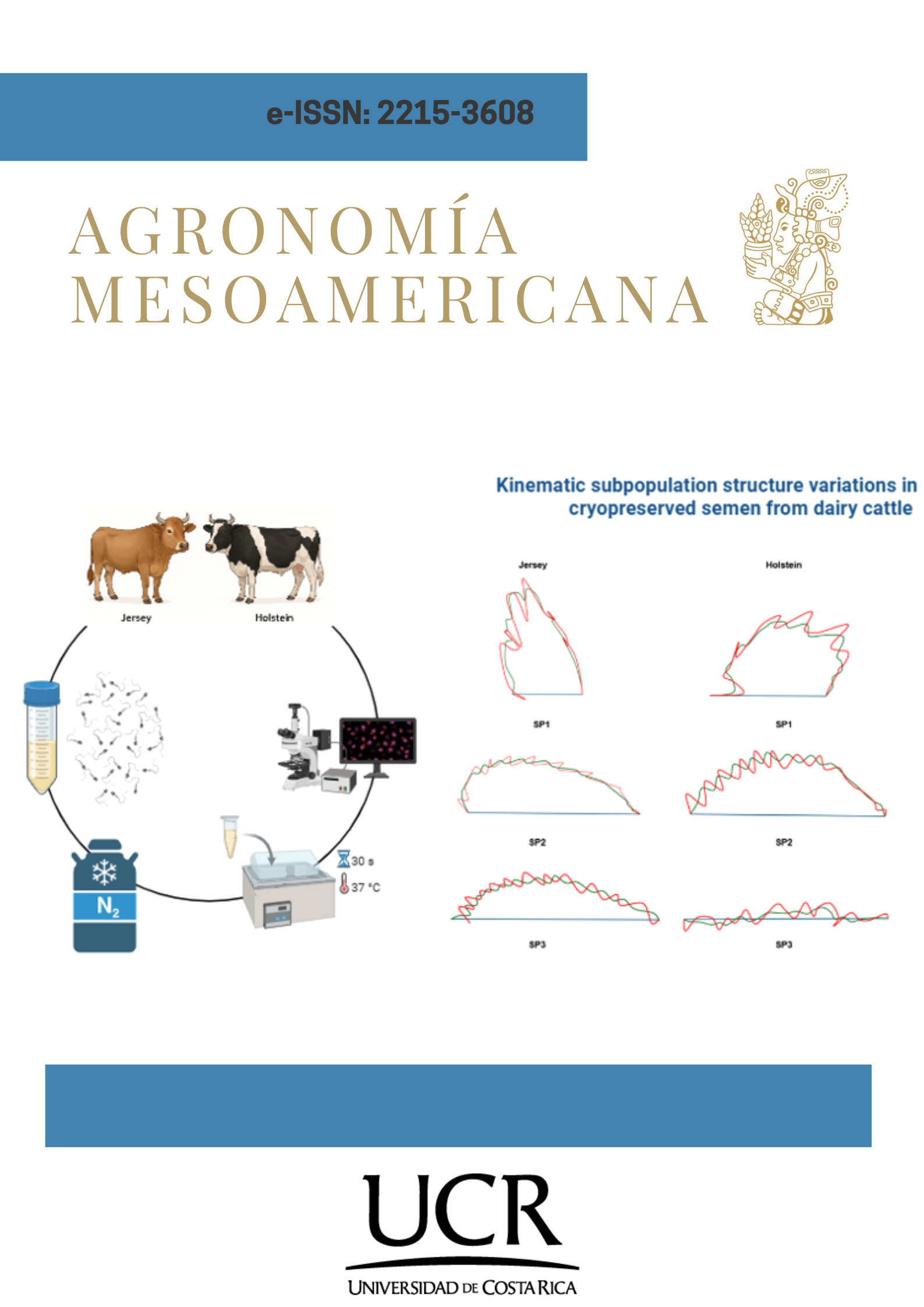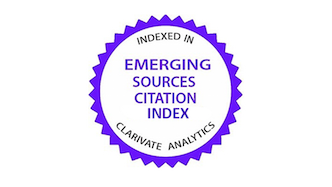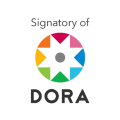Variaciones en la estructura subpoblacional cinemática del semen criopreservado de ganado lechero
DOI:
https://doi.org/10.15517/am.2025.63141Palabras clave:
ciencia animal, calidad del semen, espermatozoide, toros, movilidad espermática, inseminación artificialResumen
Introducción. En la industria lechera, el semen congelado-descongelado es importante para la inseminación artificial y la mejora genética del ganado. Objetivo. Evaluar la variación en la estructura subpoblacional cinemática del semen congelado-descongelado en razas Jersey y Holstein usando un sistema CASA-mot. Materiales y métodos. El estudio se realizó de abril a noviembre de 2023, en el Laboratorio de Reproducción Animal (AndroTEC), ubicado en el Campus Tecnológico Local San Carlos, Alajuela, Costa Rica. Se utilizaron ocho animales de las razas Holstein y Jersey, y se analizaron nueve dosis de semen congelado-descongelado por animal para cada raza. Se descongelaron a 37 °C durante 30 s, 72 dosis de semen provenientes de ocho toros (cuatro de cada raza) a 37 °C durante 30 s. La movilidad y las variables cinemáticas se analizaron utilizando la tecnología CASA-mot (Computer-Assisted Semen Analysis). Resultados. La raza Jersey presentó mostró mayores porcentajes de espermatozoides móviles totales, móviles progresivos y rápidos en comparación con la raza Holstein (P < 0,05). El análisis de factores principales reveló dos factores significativos que explicaron el 87,5 % de la varianza total en las variables cinemáticas. Las variables cinemáticas entre subpoblaciones espermáticas (SP) presentaron diferencias (P < 0,05) en ambas razas. La subpoblación SP2 fue la más veloz, con valores más altos en velocidad curvilínea (VCL), velocidad rectilínea (VSL) y velocidad de trayectoria promedio (VAP) tanto para los toros Holstein como los Jersey. Conclusiones. Se encontraron diferencias cinemáticas entre las subpoblaciones identificadas para en ambas razas. Los patrones cinemáticos de las subpoblaciones presentes en el eyaculado podrían influir en la fertilidad y rendimiento reproductivo.
Referencias
Araya-Zúñiga, I., Sevilla, F., Molina-Montero, R., Roldan, E. R. S., Barrientos-Morales, M., Silvestre, M. A., & Valverde, A. (2024). Kinematic and morphometric assessment of fresh semen, before, during and after mating period in brahman bulls. Animals, 14(1), Article 132. https://doi.org/10.3390/ANI14010132 DOI: https://doi.org/10.3390/ani14010132
Barbas, J. P., Leahy, T., Horta, A. E., & García-Herreros, M. (2018). Sperm kinematics and subpopulational responses during the cryopreservation process in caprine ejaculates. Cryobiology, 82, 137–147. https://doi.org/10.1016/J.CRYOBIOL.2018.03.005 DOI: https://doi.org/10.1016/j.cryobiol.2018.03.005
Barquero, V., Roldan, E. R. S., Soler, C., Yániz, J. L., Camacho, M., & Valverde, A. (2021). Predictive capacity of boar sperm morphometry and morphometric sub-populations on reproductive success after artificial insemination. Animals, 11(4), Article 920. https://doi.org/10.3390/ANI11040920 DOI: https://doi.org/10.3390/ani11040920
Barquero, V., Soler, C., Sevilla, F., Calderón-Calderón, J., & Valverde, A. (2021). A Bayesian analysis of boar spermatozoa kinematics and head morphometrics and their relationship with litter size fertility variables. Reproduction in Domestic Animals, 56(7), 1024–1033. https://doi.org/10.1111/RDA.13946 DOI: https://doi.org/10.1111/rda.13946
Barquero, V., Víquez, L., Calderón, J. C., & Valverde, A. (2021). Optimal frame rate to evaluate boar sperm kinematic with a CASA-Mot system. Agronomía Mesoamericana, 32(1), 1–18. https://doi.org/10.15517/am.v32i1.41928 DOI: https://doi.org/10.15517/am.v32i1.41928
Bompart, D., García-Molina, A., Valverde, A., Caldeira, C., Yániz, J., Núñez de Murga, M., & Soler, C. (2018). CASA-Mot technology: how results are affected by the frame rate and counting chamber. Reproduction, Fertility and Development, 30(6), 810–819. https://doi.org/10.1071/RD17551 DOI: https://doi.org/10.1071/RD17551
Bompart, D., Vázquez, R. F., Gómez, R., Valverde, A., Roldán, E. R. S., García-Molina, A., & Soler, C. (2019). Combined effects of type and depth of counting chamber, and rate of image frame capture, on bull sperm motility and kinematics. Animal Reproduction Science, 209, Article106169. https://doi.org/10.1016/J.ANIREPROSCI.2019.106169 DOI: https://doi.org/10.1016/j.anireprosci.2019.106169
Botta, D., de Arruda, R. P., Watanabe, Y. F., de Carvalho Balieiro, J. C., Romanello, N., do Nascimento Barreto, A., de Andrade Pantoja, M. H., Giro, A., de Carvalho, C. P. T., de Sousa Oliveira, A., & Garcia, A. R. (2019). Influence of post-thawing thermal environment on bovine sperm characteristics and in vitro fertility. Andrologia, 51(6), Article e13266. https://doi.org/10.1111/AND.13266 DOI: https://doi.org/10.1111/and.13266
Butler, S. T. (2014). Nutritional management to optimize fertility of dairy cows in pasture-based systems. Animal, 8(Supp. 1), 15–26. https://doi.org/10.1017/S1751731114000834 DOI: https://doi.org/10.1017/S1751731114000834
Caldeira, C., García-Molina, A., Valverde, A., Bompart, D., Hassane, M., Martin, P., & Soler, C. (2018). Comparison of sperm motility subpopulation structure among wild anadromous and farmed male Atlantic salmon (Salmo salar) parr using a CASA system. Reproduction, Fertility and Development, 30(6), 897–906. https://doi.org/10.1071/RD17466 DOI: https://doi.org/10.1071/RD17466
Caldeira, C., Hernández-Ibáñez, S., Valverde, A., Martin, P., Herranz-Jusdado, J. G., Gallego, V., Asturiano, J. F., Dzyuba, B., Pšenička, M., & Soler, C. (2019). Standardization of sperm motility analysis by using CASA-Mot for Atlantic salmon (Salmo salar), European eel (Anguilla anguilla) and Siberian sturgeon (Acipenser baerii). Aquaculture, 502, 223–231. https://doi.org/10.1016/j.aquaculture.2018.12.001 DOI: https://doi.org/10.1016/j.aquaculture.2018.12.001
Chicaiza-Cabezas, N., Garcia-Herreros, M., & Aponte, P. M. (2023). Germplasm cryopreservation in bulls: Effects of gonadal tissue type, cryoprotectant agent, and freezing-thawing rates on sperm quality parameters. Cryobiology, 110, 24–35. https://doi.org/10.1016/J.CRYOBIOL.2023.01.001 DOI: https://doi.org/10.1016/j.cryobiol.2023.01.001
Cucho, H., Gallegos, M., Ccoiso, R., Meza, A., Ampuero, E., Ordóñez, C., & Valverde, A. (2021). Morfometría y subpoblaciones de espermatozoides de llama (Lama glama) usando el sistema ISAS® CASA-Morph. Revista de Investigaciones Veterinarias del Perú, 32(1), Artículo e19506. https://doi.org/10.15381/RIVEP.V32I1.19506 DOI: https://doi.org/10.15381/rivep.v32i1.19506
Cucho, H., Nina, G., Meza, A., Ccalta, R., Ordóñez, C., & Valverde, A. (2022). Subpoblaciones morfométricas de espermatozoides epididimarios del venado de cola blanca (Odocoileus virginianus peruvianus). Agronomía Mesoamericana, 33(2), Artículo 46938. https://doi.org/10.15517/AM.V33I2.469388 DOI: https://doi.org/10.15517/am.v33i2.46938
Gacem, S., Catalán, J., Valverde, A., Soler, C., & Miró, J. (2020). Optimization of Casa-mot analysis of donkey sperm: Optimum frame rate and values of kinematic variables for different counting chamber and fields. Animals, 10(11), Article 1993. https://doi.org/10.3390/ani10111993 DOI: https://doi.org/10.3390/ani10111993
Gacem, S., Valverde, A., Catalán, J., Yánez Ortiz, I., Soler, C., & Miró, J. (2021). A new approach of sperm motility subpopulation structure in donkey and horse. Frontiers in Veterinary Science, 8, Article 651477. https://doi.org/10.3389/FVETS.2021.651477 DOI: https://doi.org/10.3389/fvets.2021.651477
Gallagher, M. T., Smith, D. J., & Kirkman-Brown, J. C. (2018). CASA: tracking the past and plotting the future. Reproduction, Fertility and Development, 30(6), 867–874. https://doi.org/10.1071/RD17420 DOI: https://doi.org/10.1071/RD17420
Gallego, V., Vílchez, M. C., Peñaranda, D. S., Pérez, L., Herráez, M. P., Asturiano, J. F., & Martínez-Pastor, F. (2014). Subpopulation pattern of eel spermatozoa is affected by post-activation time, hormonal treatment and the thermal regimen. Reproduction, Fertility and Development, 27(3), 529–543. https://doi.org/10.1071/RD13198 DOI: https://doi.org/10.1071/RD13198
García-Herreros, M. (2016). Sperm subpopulations in avian species: a comparative study between the rooster (Gallus domesticus) and Guinea fowl (Numida meleagris). Asian Journal of Andrology, 18(6), 889–894. https://doi.org/10.4103/1008-682X.188448 DOI: https://doi.org/10.4103/1008-682X.188448
García-Molina, A., Navarro, N., Valverde, A., Bompart, D., Caldeira, C., Vendrell, A., & Soler, C. (2022). Human kinematic and morphometric sperm subpopulation analysis using CASA technology: A new approach to spermatozoa classification. Revista Internacional de Andrología, 20(4), 257–265. https://doi.org/10.1016/J.ANDROL.2021.05.003 DOI: https://doi.org/10.1016/j.androl.2021.05.003
García-Molina, A., Navarro, N., Valverde, A., Sadeghi, S., Garrido, N., & Soler, C. (2023). Optimization of human semen analysis using CASA-Mot technology. Systems Biology in Reproductive Medicine, 69(2), 166–174. https://doi.org/10.1080/19396368.2023.2170297 DOI: https://doi.org/10.1080/19396368.2023.2170297
García-Molina, A., Valverde, A., Bompart, D., Caldeira, C., Vendrell, A., & Soler, C. (2020). Updating semen analysis: a subpopulation approach. Asian Journal of Andrology, 22(1), 118–119. https://doi.org/10.4103/aja.aja_33_19 DOI: https://doi.org/10.4103/aja.aja_33_19
Gomes, F. P., Park, R., Viana, A. G., Fernandez-Costa, C., Topper, E., Kaya, A., Memili, E., Yates, J. R., & Moura, A. A. (2020). Protein signatures of seminal plasma from bulls with contrasting frozen-thawed sperm viability. Scientific, 10, Article 14661. https://doi.org/10.1038/s41598-020-71015-9 DOI: https://doi.org/10.1038/s41598-020-71015-9
Hidalgo, M. M. T., De Almeida, A. B. M., De Moraes, F. L. Z., Marubayashi, R. Y. P., De Souza, F. F., Barreiros, T. R. R., & Martins, M. I. M. (2021). Sperm subpopulations influence the pregnancy rates in cattle. Reproduction in Domestic Animals, 56(8), 1117–1127. https://doi.org/10.1111/RDA.13955 DOI: https://doi.org/10.1111/rda.13955
Hoflack, G., Opsomer, G., Van Soom, A., Maes, D., de Kruif, A., & Duchateau, L. (2006). Comparison of sperm quality of Belgian Blue and Holstein Friesian bulls. Theriogenology, 66(8), 1834–1846. https://doi.org/10.1016/J.THERIOGENOLOGY.2006.05.007 DOI: https://doi.org/10.1016/j.theriogenology.2006.05.007
Holt, W. V., & Satake, N. (2018). Making the most of sperm activation responses: experiments with boar spermatozoa and bicarbonate. Reproduction, Fertility and Development, 30(6), 842–849. https://doi.org/10.1071/RD17476 DOI: https://doi.org/10.1071/RD17476
Ibanescu, I., Siuda, M., & Bollwein, H. (2020). Motile sperm subpopulations in bull semen using different clustering approaches – Associations with flow cytometric sperm characteristics and fertility. Animal Reproduction Science, 215, Article 106329. https://doi.org/10.1016/j.anireprosci.2020.106329 DOI: https://doi.org/10.1016/j.anireprosci.2020.106329
Ibănescu, I., Leiding, C., & Bollwein, H. (2018). Cluster analysis reveals seasonal variation of sperm subpopulations in extended boar semen. Journal of Reproduction and Development, 64(1), 33–39. https://doi.org/10.1262/jrd.2017-083 DOI: https://doi.org/10.1262/jrd.2017-083
Kathiravan, P., Kalatharan, J., Karthikeya, G., Rengarajan, K., & Kadirvel, G. (2011). Objective sperm motion analysis to assess dairy bull fertility using computer-aided system - A review. Reproduction in Domestic Animals, 46(1), 165–172. https://doi.org/10.1111/j.1439-0531.2010.01603.x DOI: https://doi.org/10.1111/j.1439-0531.2010.01603.x
Koch, J., Weber, L. P., Heppelmann, M., Freise, F., Klingelmann, M., & Bachmann, L. (2022). Effect of different Thawing methods for frozen bull semen and additional factors on the conception rate of dairy cows in Artificial Insemination. Animals, 12(18), Article 2330. https://doi.org/10.3390/ANI12182330 DOI: https://doi.org/10.3390/ani12182330
Layek, S. S., Mohanty, T. K., Kumaresan, A., & Parks, J. E. (2016). Cryopreservation of bull semen: Evolution from egg yolk based to soybean based extenders. Animal Reproduction Science, 172, 1–9. https://doi.org/10.1016/J.ANIREPROSCI.2016.04.013 DOI: https://doi.org/10.1016/j.anireprosci.2016.04.013
Martínez-Pastor, F. (2022). What is the importance of sperm subpopulations? Animal Reproduction Science, 246, Article 106844. https://doi.org/10.1016/J.ANIREPROSCI.2021.106844 DOI: https://doi.org/10.1016/j.anireprosci.2021.106844
Martínez-Pastor, F., Tizado, E. J., Garde, J. J., Anel, L., & de Paz, P. (2011). Statistical Series: Opportunities and challenges of sperm motility subpopulation analysis. Theriogenology, 75(5), 783–795. https://doi.org/10.1016/J.THERIOGENOLOGY.2010.11.034 DOI: https://doi.org/10.1016/j.theriogenology.2010.11.034
Morrell, J. M., Valeanu, A. S., Lundeheim, N., & Johannisson, A. (2018). Sperm quality in frozen beef and dairy bull semen. Acta Veterinaria Scandinavica, 60, Article 41. https://doi.org/10.1186/S13028-018-0396-2 DOI: https://doi.org/10.1186/s13028-018-0396-2
Mortimer, S. T., & De Jonge, C. J. (2018). CASA—Computer-Aided Sperm Analysis. In M. K. Skinner (Ed.), Encyclopedia of Reproduction (pp. 59–63). Elsevier. https://doi.org/10.1016/b978-0-12-801238-3.64935-8 DOI: https://doi.org/10.1016/B978-0-12-801238-3.64935-8
Pichardo-Matamoros, D., Sevilla, F., Elizondo-Salazar, J., Jiménez-Sánchez, C., Roldan, E. R. S., Soler, C., Gacem, S., & Valverde, A. (2023). Exploration of semen quality analyzed by casa-mot systems of brahman bulls infected with BLV and BHV-1. Scientific Reports, 13, Article 18659. https://doi.org/10.1038/s41598-023-45981-9 DOI: https://doi.org/10.1038/s41598-023-45981-9
Quintero-Moreno, A., Miró, J., Teresa Rigau, A., & Rodríguez-Gil, J. E. (2003). Identification of sperm subpopulations with specific motility characteristics in stallion ejaculates. Theriogenology, 59(9), 1973–1990. https://doi.org/10.1016/s0093-691x(02)01297-9 DOI: https://doi.org/10.1016/S0093-691X(02)01297-9
Quintero-Moreno, A., Rigau, T., & Rodríguez-Gil, J. (2007). Multivariate cluster analysis regression procedures as tools to identify motile sperm subpopulations in rabbit semen and to predict semen fertility and litter size. Reproduction in Domestic Animals, 42(3), 312–319. https://doi.org/10.1111/j.1439-0531.2006.00785.x DOI: https://doi.org/10.1111/j.1439-0531.2006.00785.x
Ramón, M., & Martínez-Pastor, F. (2018). Implementation of novel statistical procedures and other advanced approaches to improve analysis of CASA data. Reproduction, Fertility and Development, 30(6), 860–866. https://doi.org/10.1071/RD17479 DOI: https://doi.org/10.1071/RD17479
Schulze, M., Jakop, U., Jung, M., & Cabezón, F. (2019). Influences on thermo-resistance of boar spermatozoa. Theriogenology, 127, 15–20. https://doi.org/10.1016/J.THERIOGENOLOGY.2018.12.022 DOI: https://doi.org/10.1016/j.theriogenology.2018.12.022
Selvaraju, S., Parthipan, S., Somashekar, L., Binsila, B. K., Kolte, A. P., Arangasamy, A., Ravindra, J. P., & Krawetz, S. A. (2018). Current status of sperm functional genomics and its diagnostic potential of fertility in bovine (Bos taurus). Systems Biology in Reproductive Medicine, 64(6), 484–501. https://doi.org/10.1080/19396368.2018.1444816 DOI: https://doi.org/10.1080/19396368.2018.1444816
Shojaei, H., Kroetsch, T., Wilde, R., Blondin, P., Kastelic, J. P., & Thundathil, J. C. (2012). Moribund sperm in frozen-thawed semen, and sperm motion end points post-thaw and post-swim-up, are related to fertility in Holstein AI bulls. Theriogenology, 77(5), 940–951. https://doi.org/10.1016/J.THERIOGENOLOGY.2011.09.026 DOI: https://doi.org/10.1016/j.theriogenology.2011.09.026
Sitko, E. M., Laplacette, A., Duhatschek, D., Rial, C., Perez, M. M., Tompkins, S., Kerwin, A. L., & Giordano, J. O. (2024). Reproductive physiological outcomes of dairy cows with different genomic merit for fertility: biomarkers, uterine health, endocrine status, estrus features, and response to ovarian synchronization. Journal of Dairy Science, 107(10), 8670–8687. https://doi.org/10.3168/JDS.2023-24376 DOI: https://doi.org/10.3168/jds.2023-24376
Soler, C., Alambiaga, A., Martí, M. A., García-Molina, A., Valverde, A., Contell, J., & Campos, M. (2017). Dog sperm head morphometry: its diversity and evolution. Asian Journal of Andrology, 19(2), 149–153. https://doi.org/10.4103/1008-682X.189207 DOI: https://doi.org/10.4103/1008-682X.189207
Soler, C., Contell, J., Bori, L., Sancho, M., García-Molina, A., Valverde, A., & Segarvall, J. (2017). Sperm kinematic, head morphometric and kinetic-morphometric subpopulations in the blue fox (Alopex lagopus). Asian Journal of Andrology, 19(2), 154–159. https://doi.org/10.4103/1008-682X.188445 DOI: https://doi.org/10.4103/1008-682X.188445
Soler, C., Valverde, A., Bompart, D., Fereidounfar, S., Sancho, M., Yániz, J. L., García-Molina, A., & Korneenko-Zhilyaev, Yu. A. (2017). New methods of semen analysis by casa. Sel’skokhozyaistvennaya Biologiya (Agricultural Biology), 52(2), 232–241. https://doi.org/10.15389/agrobiology.2017.2.232eng DOI: https://doi.org/10.15389/agrobiology.2017.2.232eng
Solís, J. M., Sevilla, F., Silvestre, M. A., Araya-Zúñiga, I., Roldan, E. R. S., Saborío-Montero, A., & Valverde, A. (2024). Effect of thawing procedure and thermo-resistance test on sperm motility and kinematics patterns in two bovine breeds. Animals, 14(19), Article 2768. https://doi.org/10.3390/ANI14192768 DOI: https://doi.org/10.3390/ani14192768
Stefanska, B., Sobolewska, P., Fievez, V., Pruszynska-Oszmałek, E., Purwin, C., & Nowak, W. (2024). The effect of heat stress on performance, fertility, and adipokines involved in regulating systemic immune response during lipolysis of early lactating dairy cows. Journal of Dairy Science, 107(4), 2111–2128. https://doi.org/10.3168/JDS.2023-23804 DOI: https://doi.org/10.3168/jds.2023-23804
Valverde, A., Arenán, H., Sancho, M., Contell, J., Yániz, J., Fernández, A., & Soler, C. (2016). Morphometry and subpopulation structure of Holstein bull spermatozoa: variations in ejaculates and cryopreservation straws. Asian Journal of Andrology, 18(6), 851–857. https://doi.org/10.4103/1008-682X.187579 DOI: https://doi.org/10.4103/1008-682X.187579
Valverde, A., Arnau, S., García-Molina, A., Bompart, D., Campos, M., Roldán, E., & Soler, C. (2019). Dog sperm swimming parameters analysed by computer-assisted semen analysis of motility reveal major breed differences. Reproduction in Domestic Animals, 54(5), 795–803. https://doi.org/10.1111/rda.13420 DOI: https://doi.org/10.1111/rda.13420
Valverde, A., Barquero, V., & Soler, C. (2020). The application of computer-assisted semen analysis (CASA) technology to optimise semen evaluation. A review. Journal of Animal and Feed Sciences, 29(3), 189–198. https://doi.org/10.22358/jafs/127691/2020 DOI: https://doi.org/10.22358/jafs/127691/2020
Valverde, A., Castro-Morales, O., Madrigal-Valverde, M., Camacho, M., Barquero, V., Soler, C., & Roldan, E. R. S. (2021). Sperm kinematic subpopulations of the American crocodile (Crocodylus acutus). PLOS ONE, 16(3), Article e0248270. https://doi.org/10.1371/journal.pone.0248270 DOI: https://doi.org/10.1371/journal.pone.0248270
Valverde, A., Castro-Morales, O., Madrigal-Valverde, M., & Soler, C. (2019). Sperm kinematics and morphometric subpopulations analysis with CASA systems: A review. Revista de Biología Tropical, 67(6), 1473–1487. https://doi.org/10.15517/rbt.v67i6.35151 DOI: https://doi.org/10.15517/rbt.v67i6.35151
Valverde, A., Madrigal, M., Caldeira, C., Bompart, D., Núñez de Murga, J., Arnau, S., & Soler, C. (2019). Effect of frame rate capture frequency on sperm kinematic parameters and subpopulation structure definition in boars, analysed with a CASA-Mot system. Reproduction in Domestic Animals, 54(2), 167–175. https://doi.org/10.1111/rda.13320 DOI: https://doi.org/10.1111/rda.13320
Valverde, A., Madrigal-Valverde, M., Castro-Morales, O., Gadea-Rivas, A., Johnston, S., & Soler, C. (2019). Kinematic and head morphometric characterisation of spermatozoa from the Brown Caiman (Caiman crocodilus fuscus). Animal Reproduction Science, 207, 9–20. https://doi.org/10.1016/j.anireprosci.2019.06.011 DOI: https://doi.org/10.1016/j.anireprosci.2019.06.011
van der Horst, G. (2020). Computer Aided Sperm Analysis (CASA) in domestic animals: Current status, three D tracking and flagellar analysis. Animal Reproduction Science, 220, Article 106350. https://doi.org/10.1016/j.anireprosci.2020.106350 DOI: https://doi.org/10.1016/j.anireprosci.2020.106350
Vázquez, A. J. F., Cedillo, M. J., Quezada, V. J., Rivas, A. C., Morales, E. C. L., Ayala, E. M. E., Hernández, M. J., González, R. A., & Aragón, M. A. (2015). Effects of repeated electroejaculations on kinematic sperm subpopulations and quality markers of Mexican creole goats. Animal Reproduction Science, 154, 29–38. https://doi.org/10.1016/j.anireprosci.2014.12.009 DOI: https://doi.org/10.1016/j.anireprosci.2014.12.009
Víquez, L., Barquero, V., Soler, C., Roldan, E. R. S., & Valverde, A. (2020). Kinematic sub-populations in bull spermatozoa: A comparison of classical and Bayesian approaches. Biology, 9(6), Article 138. https://doi.org/10.3390/biology9060138 DOI: https://doi.org/10.3390/biology9060138
Víquez, L., Barquero, V., & Valverde, A. (2021). Optimal conditions for the kinematic analysis in fresh semen of Brahman bulls with a CASA-Mot system. Agronomía Mesoamericana, 32(3), 920–938. https://doi.org/10.15517/AM.V32I3.42768 DOI: https://doi.org/10.15517/am.v32i3.42768
Winters, R. A., Hamilton, D. N., Bhatnagar, A. S., Fitzgerald, R., Bovin, N., & Miller, D. J. (2018). Porcine sperm binding to oviduct cells and glycans as supplements to traditional laboratory semen analysis. Journal of Animal Science, 96(12), 5265–5275. https://doi.org/10.1093/jas/sky372 DOI: https://doi.org/10.1093/jas/sky372
Yánez-Ortiz, I., Catalán, J., Rodríguez-Gil, J. E., Miró, J., & Yeste, M. (2022). Advances in sperm cryopreservation in farm animals: Cattle, horse, pig and sheep. Animal Reproduction Science, 246, Article 106904. https://doi.org/10.1016/J.ANIREPROSCI.2021.106904 DOI: https://doi.org/10.1016/j.anireprosci.2021.106904
Yániz, J. L., Palacín, I., Caycho, K. S., Soler, C., Silvestre, M. A., & Santolaria, P. (2018). Determining the relationship between bull sperm kinematic subpopulations and fluorescence groups using an integrated sperm quality analysis technique. Reproduction, Fertility and Development, 30(6), 919–923. https://doi.org/10.1071/RD17441 DOI: https://doi.org/10.1071/RD17441
Yániz, J. L., Palacín, I., Vicente-Fiel, S., Sánchez-Nadal, J., & Santolaria, P. (2015). Sperm population structure in high and low field fertility rams. Animal Reproduction Science, 156, 128–134. https://doi.org/10.1016/j.anireprosci.2015.03.012 DOI: https://doi.org/10.1016/j.anireprosci.2015.03.012
Yániz, J. L., Silvestre, M. A., Santolaria, P., & Soler, C. (2018). CASA-Mot in mammals: an update. Reproduction, Fertility, and Development, 30(6), 799–809. https://doi.org/10.1071/RD17432 DOI: https://doi.org/10.1071/RD17432

Archivos adicionales
Publicado
Número
Sección
Categorías
Licencia

Esta obra está bajo una licencia internacional Creative Commons Atribución-NoComercial-SinDerivadas 4.0.
1. Política propuesta para revistas de acceso abierto
Los autores/as que publiquen en esta revista aceptan las siguientes condiciones:
- Los autores/as conservan los derechos morales de autor y ceden a la revista el derecho de la primera publicación, con el trabajo registrado con la licencia de atribución, no comercial y sin obra derivada de Creative Commons, que permite a terceros utilizar lo publicado siempre que mencionen la autoría del trabajo y a la primera publicación en esta revista, no se puede hacer uso de la obra con propósitos comerciales y no se puede utilizar las publicaciones para remezclar, transformar o crear otra obra.
- Los autores/as pueden realizar otros acuerdos contractuales independientes y adicionales para la distribución no exclusiva de la versión del artículo publicado en esta revista (p. ej., incluirlo en un repositorio institucional o publicarlo en un libro) siempre que indiquen claramente que el trabajo se publicó por primera vez en esta revista.
- Se permite y recomienda a los autores/as a publicar su trabajo en Internet (por ejemplo en páginas institucionales o personales) antes y durante el proceso de revisión y publicación, ya que puede conducir a intercambios productivos y a una mayor y más rápida difusión del trabajo publicado (vea The Effect of Open Access).





























